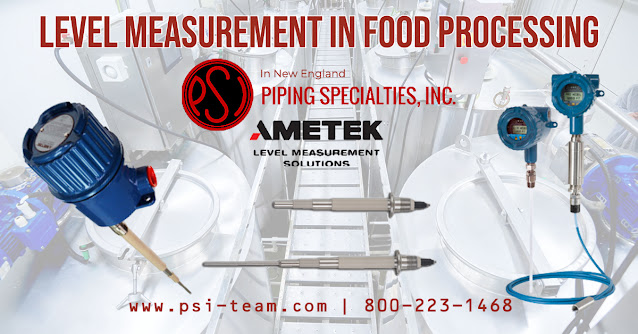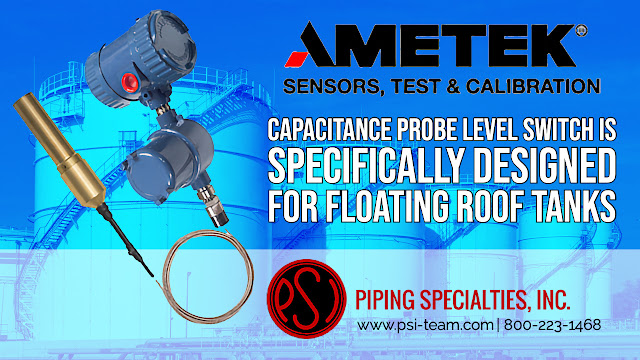Several functional level measurement technologies have viable solutions for a broad range of industrial and municipal water treatment applications. Because of the variety of applications that exist and the varying application conditions, no one technology is best suited in all cases.
POINT LEVEL VERSUS CONTINUOUS LEVEL INSTRUMENTS
Regardless of the application, there are two significant classifications of level measurement instrumentation: point level and continuous level measurement.
Point Level (On/Off) measurement indicates the absence or presence of level at a certain threshold (point) within a vessel. Point-level switches perform as high level and spill prevention alarms, low level, pump protection alarms and pump control.
Continuous Level (Proportional) measurement indicates the level in a vessel over the full span of capacity. These devices perform as process control as well as inventory control and management.
LEVEL CONTROL TECHNOLOGY CHOICES
The technologies used to measure level are affected differently by the varying process conditions. Below is a brief description of the different technologies commonly used in a water treatment facility.
RF ADMITTANCE/CAPACITANCE
RF Admittance/Capacitance employs a radio frequency signal and monitors for a change in capacitance. Either the presence or absence of material or how much material is in contact with the sensor, making it highly versatile and a right choice for a wide range of conditions and materials for point or continuous level measurement.
RADAR
Radar utilizes either Pulsed Wave or Frequency Modulated Continuous Wave (FMCW) through-air transmission that allows for an accurate non-contact reading of reflected electromagnetic signals.
MAGNETOSTRICTIVE
Magnetostrictive uses an electric pulse from ferromagnetic wire to accurately detect a float's position with embedded magnets. As the pulse intersects the float's magnetic field, a second pulse reflects an electric circuit that accurately determines the distance and thus the level position.
CONDUCTIVITY SWITCHES
Conductivity switches measure the drop-in resistance when a conductive liquid contacts with two probes or a probe and a vessel wall.
ULTRASONIC (POINT LEVEL)
Ultrasonic (Point Level) measurement electronically resonates a crystal at a fixed frequency to generate sound waves that travel across an air gap to a second crystal. As liquid fills the gap between the two crystals, the second crystal begins to resonate with the first.
ULTRASONIC (CONTINUOUS LEVEL)
Ultrasonic (Continuous Level) measurement uses a transmitter to generate an ultrasonic pulse and measures the time it takes for a reflected signal to return to the transducer to determine a liquid level.
GUIDED WAVE RADAR (GWR)
Guided Wave Radar (GWR) utilizes a Time Domain Reflectometry (TDR) technique by sending a highly focused electronic signal down a metallic rod or flexible cable waveguide. When the transmitted signal intersects the liquid's surface, it reflects along the rod or cable to determine the distance traveled. The level position is then easily inferred.
HYDROSTATIC
Hydrostatic measurement immerses a pressure transmitter with a sensing diaphragm and a sealed electronic circuitry that transmits an analog signal proportional to the liquid level above the sensor.
FLOAT SWITCHES
Float switches rely on a low-density float mounted in a vessel that magnetically couples to a limit switch. A change in fluid height actuates a switch by moving the float.
VIBRATION/TUNING FORK
The Vibration/Tuning fork is piezoelectrically energized and vibrates at a frequency of approximately 1200Hz, and as the process media cover the fork, the frequency shifts. The internal oscillator the frequency shift by and converts it into a switching command.
POINT LEVEL SOLUTIONS
Advanced RF Admittance/Capacitance point level devices are the most versatile of the point level technologies, especially with process media that can coat the sensor. They provide excellent spill/overfill protection. They are simple to install and have no moving parts, making them virtually maintenance-free. Their robust design and circuitry make them an ideal solution for many water treatment applications.
Both tuning forks and ultrasonic gap switches provide reliable high- or low-level measurements in various applications. For non-coating conductive liquids, conductivity switches provide economic priced measurement while float switches appear in many basic applications at very cost-effective prices.
CONTINUOUS LEVEL SOLUTIONS
Mechanical systems such as floats and bubblers require extensive maintenance and are less reliable and accurate than electronic systems. Hydrostatic systems afford better reliability and are simple to use, and can transmit data to another receiver for remote monitoring, recording, and control.
RF Admittance/Capacitance level is a time-proven and one of the best available technologies for indication and control. RF technology inherently provides the highest accuracy and repeatability in interface measurements. Variations in the makeup of upper and lower phases of a liquid have no appreciable effect on system accuracy. Recalibration is not required.
For short-span measurements, RF Admittance technology provides one of the most preferred readings. As the level of measurement span decreases, the more appropriate RF technology becomes. In spans of only a few inches, RF systems can repeatedly produce accuracies of 1/32ths of an inch. RF has the added benefit of not being limited by “dead zones” inherent with many popular technologies often selected for measurement ranges larger than 5 feet.
Non-metallic tanks pose no technical problems for Ultrasonic, Magnetostrictive, Hydrostatic Pressure, Radar, and GWR (Guided Wave Radar) technologies. The GWR approach is suitable for vessels with internal obstructions and uses lower energy levels than airborne radar technologies. Non-contact technologies, such as Radar and Ultrasonic, can have measurement ranges up to 130 feet.
For long-range measurements or headroom limitations, flexible sensors offer insertion lengths up to several hundred feet for Hydrostatic Pressure and RF Admittance technology products. Loop-powered GWR (TDR)-based products allow measurement ranges up to 115 feet in selected applications. Magnetostrictive technology provides an accuracy of 0.1% of measurement span in flexible sensor designs up to a maximum range of 70 feet.
Piping Specialties / PSI Controls
800-223-1468




